calsfoundation@cals.org
Fort Smith National Cemetery
The Fort Smith National Cemetery is the oldest original cemetery of the state’s three national cemeteries. The other two are in Fayetteville (Washington County) and Little Rock (Pulaski County). At the end of fiscal year 2005, there were 13,127 interments. The first recorded burial was that of surgeon Thomas Russell. He was a War of 1812 veteran who was with the original company of riflemen who landed on December 25, 1817, at Fort Smith (Sebastian County). He died there on August 24, 1819.
The cemetery originally served as the post cemetery for the first Fort Smith. While the first recorded burial took place in 1819, by 1823, roughly twenty-five percent of the men at Fort Smith had died. This was one reason for the military’s abandonment of the original post in 1825. Even after the military’s abandonment of the fort, the cemetery was still used. Major William Bradford, the first commanding officer of Fort Smith, died on October 20, 1826, and was buried in the old post cemetery. The fort was reoccupied for roughly one year from 1833 to 1834, and during this time, eight soldiers and one surgeon were interred in the existing post cemetery. In July 1838, troops returned to the area to build a new Fort Smith on recently purchased land. The new post cemetery was established encompassing the original cemetery and included the renovation of the old cemetery.
From April 23, 1861, to September 1, 1863, Fort Smith was under the control of the Confederate army. During this time, many Confederate soldiers were buried at Fort Smith, including 475 unknown Confederate soldiers. Two significant Confederate burials were Brigadier General James McIntosh and Brigadier General Alexander E. Steen.
President Abraham Lincoln signed the act authorizing the establishment of national cemeteries on July 17, 1862. At the time, national cemeteries were for soldiers who died in the line of duty. In 1873, eligibility was expanded to include all veterans with an honorable discharge. Today, any veteran, reservist, or National Guard member with twenty years of qualifying service (those who would be entitled to retirement pay if at least sixty years of age) is automatically eligible, as well as those who die on active duty. Honorably discharged veterans, their spouses, and their dependent children may also be eligible for burial in a national cemetery. Burial includes a gravesite and grave liner, and the Department of Veterans Affairs will open and close the grave. At no cost, a headstone is provided, a presidential memorial certificate and U.S. flag are given to the family, and perpetual care is taken of the grave.
When the post cemetery was designated as a national cemetery in 1867, a whitewashed fence surrounded the five acres of burial ground. The cemetery was under the jurisdiction of the Department of War for all but two months of the first 106 years. For two months in 1871, the Department of the Interior had jurisdiction. It had plans to dispose of the land, but the War and Interior secretaries exchanged correspondence, and jurisdiction was transferred back to the War Department by an executive order signed on May 22, 1871, by President Ulysses S. Grant. The cemetery stayed in the hands of the War Department until September 1973. Public Law 93-43 gave the responsibility for national cemeteries to the Department of Veterans Affairs.
Multiple renovations have been made over the years as the cemetery has acquired more land. The most recent renovations include a new stone committal shelter that was built in 1997 just inside one of the newest sections of the cemetery. The original cemetery gates were moved to the new section of the cemetery leading to the committal shelter. The most recent acquisition of land was nine acres located directly south of the newest section of the cemetery. That addition will take the full size of the cemetery up to 31.3 acres, only 0.4 acres smaller than Little Rock National Cemetery, the state’s largest cemetery. Also, the addition will allow the cemetery to remain open through the year 2040.
More than 13,000 people are interred in the cemetery, including a few that are especially notable. Judge Isaac Charles Parker, known as the “hanging judge,” died on November 17, 1896, and was buried in Section 9. Brigadier General William Orlando Darby, a hometown hero, is buried just down the row from Parker. Joel R. Stubblefield was recently interred. He was president of Westark College in Fort Smith for many years and led the transition of that institution from a two-year community college to the four-year university known today as the University of Arkansas at Fort Smith (UAFS). He served as the first chancellor until the time of his death. Stubblefield was buried with full military honors in October 2005.
The Fort Smith National Cemetery was listed on the National Register of Historic Places on May 20, 1999.
For additional information:
Fort Smith National Cemetery. http://www.cem.va.gov/CEM/cems/nchp/ftsmith.asp (accessed August 19, 2023).
“Fort Smith National Cemetery.” National Register of Historic Places nomination form. On file at Arkansas Historic Preservation Program, Little Rock, Arkansas.
Maranda Radcliff
Fort Smith, Arkansas
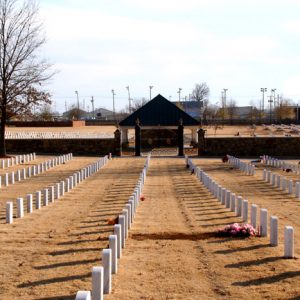 Fort Smith National Cemetery
Fort Smith National Cemetery 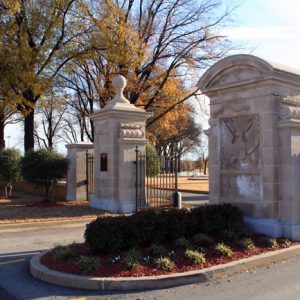 Fort Smith National Cemetery
Fort Smith National Cemetery 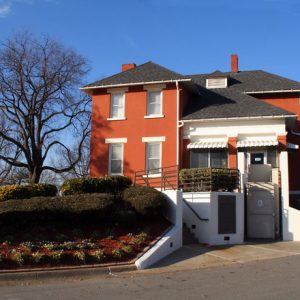 Fort Smith National Cemetery
Fort Smith National Cemetery 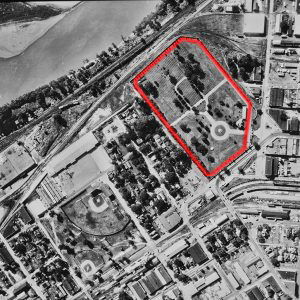 Fort Smith National Cemetery
Fort Smith National Cemetery  Fort Smith National Cemetery
Fort Smith National Cemetery 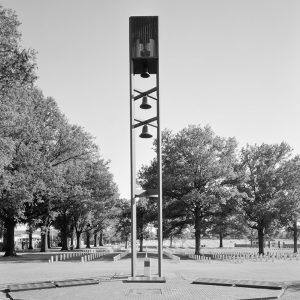 Fort Smith National Cemetery
Fort Smith National Cemetery 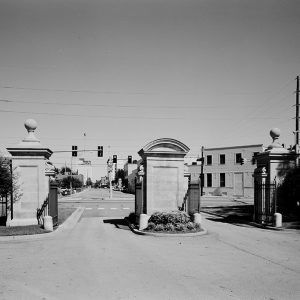 Fort Smith National Cemetery Entrance
Fort Smith National Cemetery Entrance 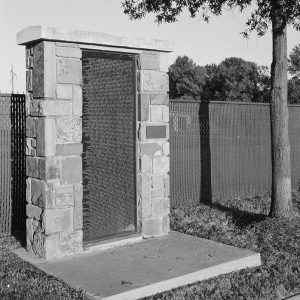 Vietnam Veterans Memorial
Vietnam Veterans Memorial 



Comments
No comments on this entry yet.